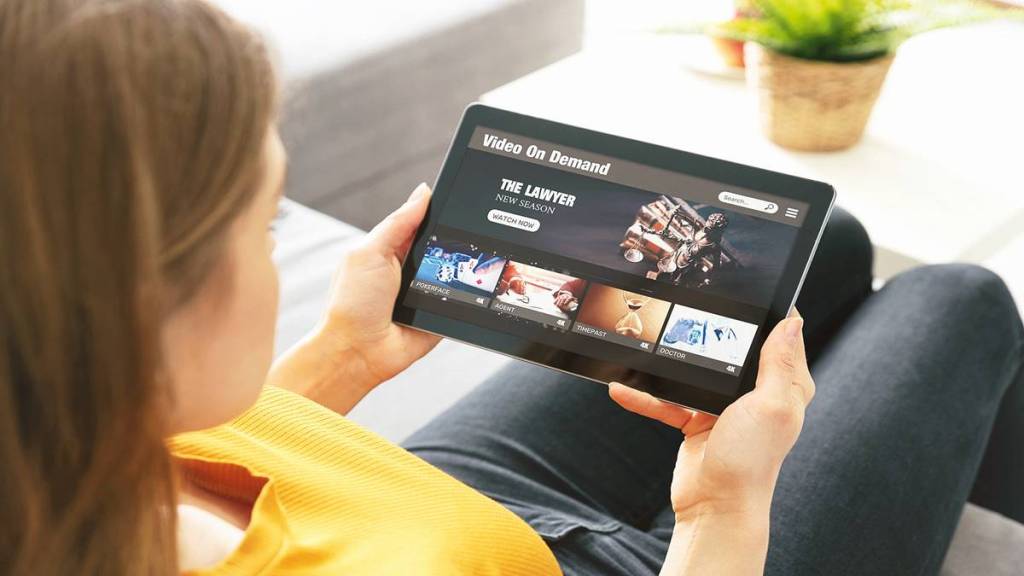When RRR completed its successful theatrical run earlier this year, wrapping up with an impressive gross box-office collection of Rs 9 bn — making it the second-highest grossing film of 2022 — OTTs initially made the epic action drama available on their platforms, but with a catch. Viewers had to pay a certain amount to rent or purchase the movie. While it was available for Rs 200 or less (if one was a subscriber) for ZEE5, the film could be rented for Rs 89 or bought for Rs 349 at BookMyShow Stream.
Simply put, video streaming platforms are cashing in on Transactional Video on Demand (TVOD) — aka pay-per-view — a business model that gained traction when cinemas were shut during the beginning of the pandemic. The idea is to earn additional revenues from blockbusters or films with high demand after they have had their successful theatrical runs. Apart from TVOD, in which end users have to pay for viewing particular content, there are some other business models employed by OTTs. For instance, there is PVOD or Prime Video on Demand, where end users get early access to content before it hits mass market, SVOD (subscription video on demand) where users pay a monthly or yearly subscription fee and AVOD (advertising-based video on demand) where the content is funded by advertisements, like in the case of YouTube.
Ashish Saksena, COO, cinemas, BookMyShow, says the TVOD model essentially means that people pay only for the content that they watch — a prevalent trend in other global cinema markets.
Also Read: Here’s how much revenue is being rolled out around Salman Khan’s Bigg Boss
According to a recent report by global consulting firm PwC titled ‘Global Entertainment & Media Outlook 2022-2026’, India’s OTT Video services are expected to become a Rs 21,031 crore industry by 2026. Within this, Rs 19,973 crore would come from subscription-based services and Rs 1,058 crore from TVOD, the report suggests. Globally, the pay-per-view (TVOD) market size is expected to reach $13.25 billion by 2028, according to a report by Million Insights, a market research firm.
According to Saksena, BookMyShow has started offering TV series, a first, in the TVOD space, adding that more than 90% of their audience choose to ‘rent’ titles, reinforcing the pay-per-view phenomenon slowly entrenching into the on-demand content-viewing market. “This has instilled confidence within the market on the TVOD format, resulting in more players joining the bandwagon, which will in turn aid the growth of TVOD as a content format in India,” he adds.
Also Read: Gangubai Kathiawadi to Uunchai: Content-driven films that have been highly acclaimed in 2022
The TVOD model entered India significantly after the SVOD (subscription video-on-demand) model took off here making it the go-to format by default, he explains further.
In April this year, Amazon Prime Video launched Prime Video Store, its TVOD movie rental service in India, through which customers get early access to the latest Indian and international movies. Their TVOD rental service will be available to all Prime members, as well as anyone who isn’t a Prime member.
Gaurav Gandhi, country head, Amazon Prime Video India, says, “India continues to be one of Prime Video’s fastest growing and most engaged locales globally. The TVOD movie rental service will not just give even more expanded reach to films but also give customers more choice in how they want to access and watch content.”
In 2020, Zee launched ZEEPlex, a cinema2home service, where films would be available on a per film price basis, a TVOD model. Salman Khan-starrer Radhe (2021) became one of its first mega releases. ZEEPlex also has a catalogue of international content available for rent. For instance, the 2021 film Cinderella is available for Rs 89. Films like Umma, Jockey and Studio 666 are also available on its TVOD model. Similarly, ShemarooMe also ventured into the TVOD model during the pandemic. However, Netflix has so far not introduced the model. Last year, telecom company Vodafone Idea, rebranded as Vi, too, announced the launch of its pay-per-view streaming service that is available on Vi Movies and TV app, and offers content as part of a deal with Hungama Digital Media Entertainment that operates the Hungama video and audio apps.
Cost benefits
According to Saksena of BookMyShow, while subscription-based platforms require a commitment of time and money (typically annually) from the user, pay-per-view offers the liberty to select a title and pay for exactly what the user wants to watch, without having to subscribe to multiple platforms to fulfil their content requirements. As compared to TVOD costs, a monthly Prime Video subscription costs Rs 179, quarterly Rs 459 and annually Rs 1,499.


